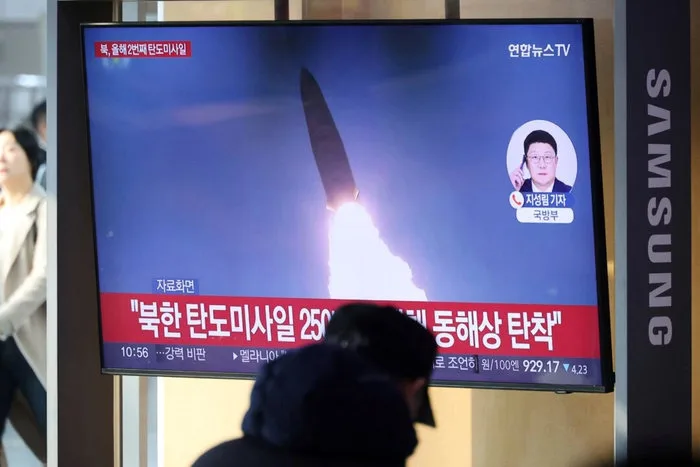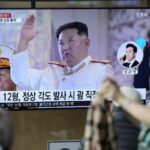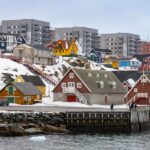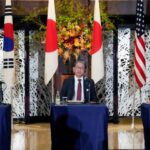By Evgenia Filimianova
North Korea test-fired multiple short-range ballistic missiles on Oct. 22, South Korea’s military said. The launches were the first since May and came a week before U.S. President Donald Trump and other world leaders are expected to attend the Asia-Pacific Economic Cooperation summit in Gyeongju, South Korea, from Oct. 31 to Nov. 1.
South Korea’s Joint Chiefs of Staff said the projectiles were fired from an area near Pyongyang early on Wednesday and flew about 350 kilometers (217 miles) toward the northeast. The missiles appeared to land inland, a military official said.
Japan’s Prime Minister Sanae Takaichi said the launch posed no immediate threat to Japan’s security, adding that Tokyo was sharing information in real time with Washington and Seoul.
The missile test violates the United Nations Security Council resolutions that ban Pyongyang from using ballistic technology. It also marks the first launch since Lee Jae-myung took office as South Korea’s president in June, vowing to pursue dialogue with North Korea.
Trump’s Asia Tour
Trump is to leave for Asia at the end of the week, his first trip to the region during his second term.
He plans to go to Malaysia first for a regional summit, and then head to Japan before travelling on to South Korea for the APEC meeting.
“I‘ll be in Malaysia, I’ll be in Japan, I‘ll be in a couple of others. We’ll be sort of doing a little bit of a tour,” Trump told reporters on Monday.
South Korean officials said on Monday that they expect to finalize their own trade agreement with the United States during the upcoming in-person negotiations.
On July 30, Trump announced that a broad agreement had been reached to lower tariffs on South Korean goods to 15 percent and for South Korea to invest $350 billion in the United States.
U.S. Commerce Secretary Howard Lutnick clarified in a subsequent media appearance that, although the deal was agreed upon in principle, no formal documents had been signed.
Regional Dynamics
In August, Trump signaled that a summit with North Korean leader Kim Jong Un could take place.
“I’d like to meet him this year. … I look forward to meeting with Kim Jong Un in the appropriate future,” Trump said.
During his first term, Trump met with the communist leader three times, becoming the first sitting U.S. president to set foot in North Korea.
In September, Kim said he had fond memories of Trump and that he saw no reason to avoid talks with Washington if the United States dropped its demand that Pyongyang abandon its nuclear arsenal.
He reiterated that North Korea would never give up its weapons in exchange for sanctions relief.
Kim said he had turned down recent offers from Seoul and Washington, including South Korea’s proposal to dismantle Pyongyang’s nuclear program in stages.
Before departing for New York City on September 22 to attend the U.N. General Assembly, Lee described freezing the nuclear weapons program as an “interim emergency measure” and a “feasible, realistic alternative” to complete denuclearization.
“So long as we do not give up on the long-term goal of denuclearisation, I believe there are clear benefits to having North Korea stop its nuclear and missile development,” Lee told the BBC last month. “The question is whether we persist with fruitless attempts towards the ultimate goal or we set more realistic goals and achieve some of them.”
Earlier this month, Kim showcased North Korea’s newest intercontinental ballistic missile during a military parade marking the 80th anniversary of the ruling Workers’ Party. It was attended by senior officials from China and Russia.
North Korea declared itself a nuclear power in 2022 and passed a law allowing it to launch a nuclear strike “automatically” against any “hostile forces” posing an imminent threat to the nation, state mouthpiece Korean Central News Agency (KCNA) reported.
Catherine Yang, The Associated Press, and Reuters contributed to this report.





